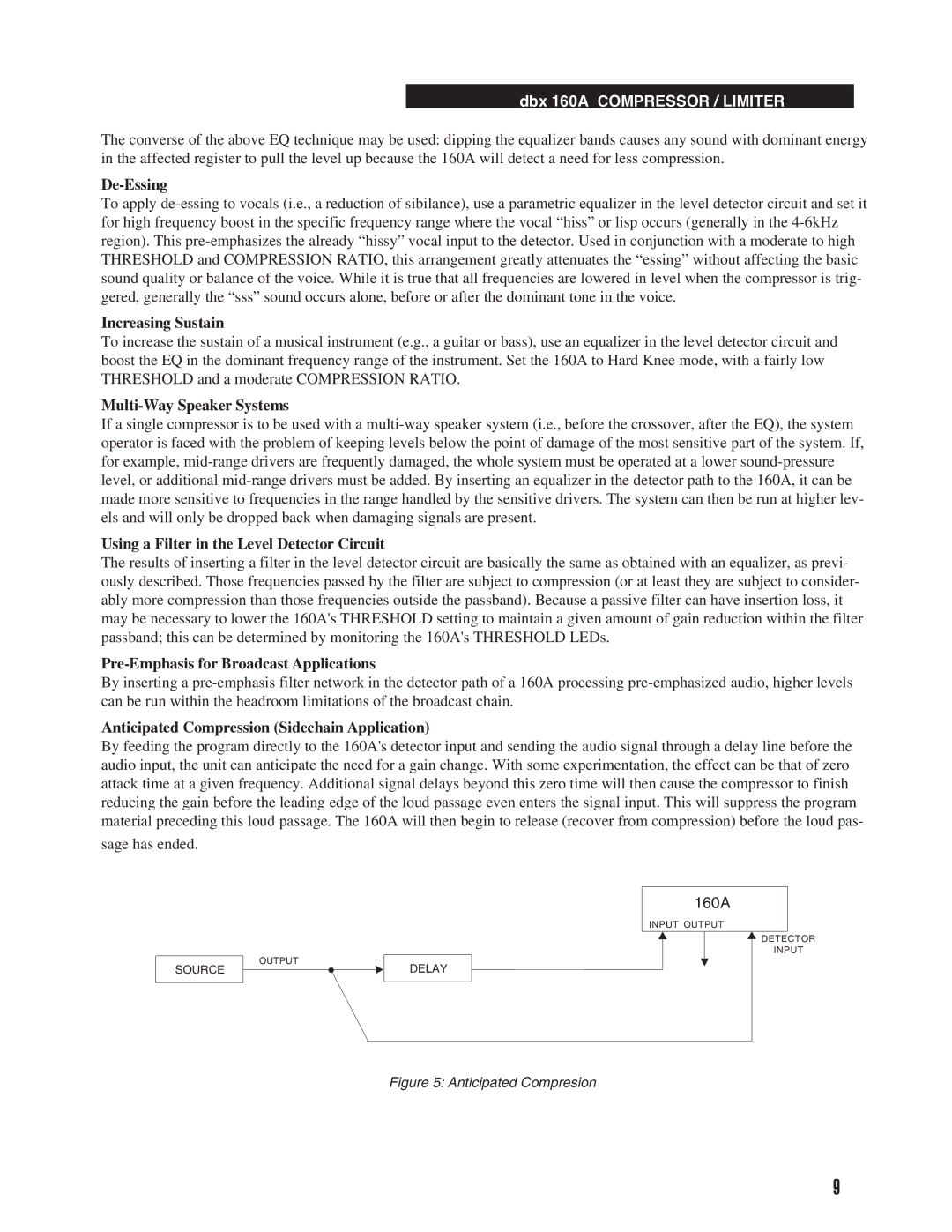
dbx 160A COMPRESSOR / LIMITER
The converse of the above EQ technique may be used: dipping the equalizer bands causes any sound with dominant energy in the affected register to pull the level up because the 160A will detect a need for less compression.
De-Essing
To apply
Increasing Sustain
To increase the sustain of a musical instrument (e.g., a guitar or bass), use an equalizer in the level detector circuit and boost the EQ in the dominant frequency range of the instrument. Set the 160A to Hard Knee mode, with a fairly low THRESHOLD and a moderate COMPRESSION RATIO.
Multi-Way Speaker Systems
If a single compressor is to be used with a
Using a Filter in the Level Detector Circuit
The results of inserting a filter in the level detector circuit are basically the same as obtained with an equalizer, as previ- ously described. Those frequencies passed by the filter are subject to compression (or at least they are subject to consider- ably more compression than those frequencies outside the passband). Because a passive filter can have insertion loss, it may be necessary to lower the 160A's THRESHOLD setting to maintain a given amount of gain reduction within the filter passband; this can be determined by monitoring the 160A's THRESHOLD LEDs.
Pre-Emphasis for Broadcast Applications
By inserting a
Anticipated Compression (Sidechain Application)
By feeding the program directly to the 160A's detector input and sending the audio signal through a delay line before the audio input, the unit can anticipate the need for a gain change. With some experimentation, the effect can be that of zero attack time at a given frequency. Additional signal delays beyond this zero time will then cause the compressor to finish reducing the gain before the leading edge of the loud passage even enters the signal input. This will suppress the program material preceding this loud passage. The 160A will then begin to release (recover from compression) before the loud pas-
sage has ended..
SOURCE
| 160A |
| INPUT OUTPUT |
| DETECTOR |
| INPUT |
OUTPUT | DELAY |
|
Figure 5: Anticipated Compresion
9
